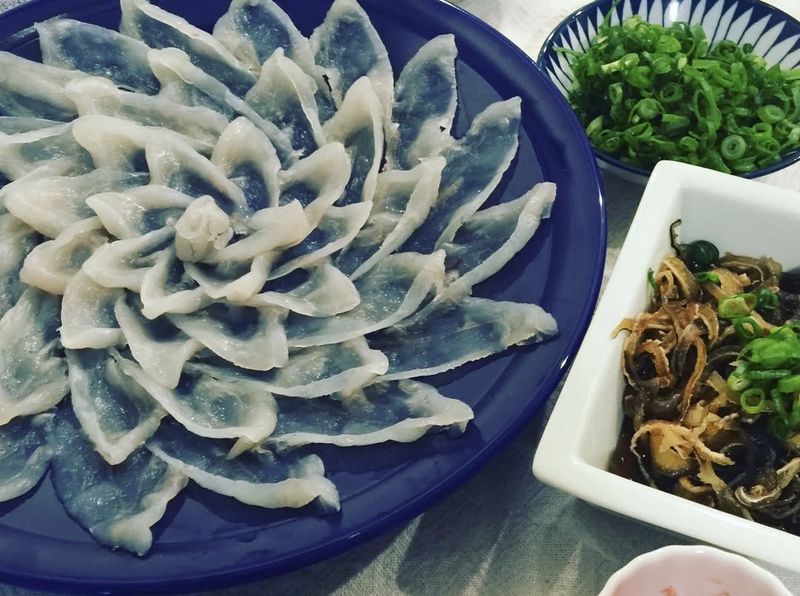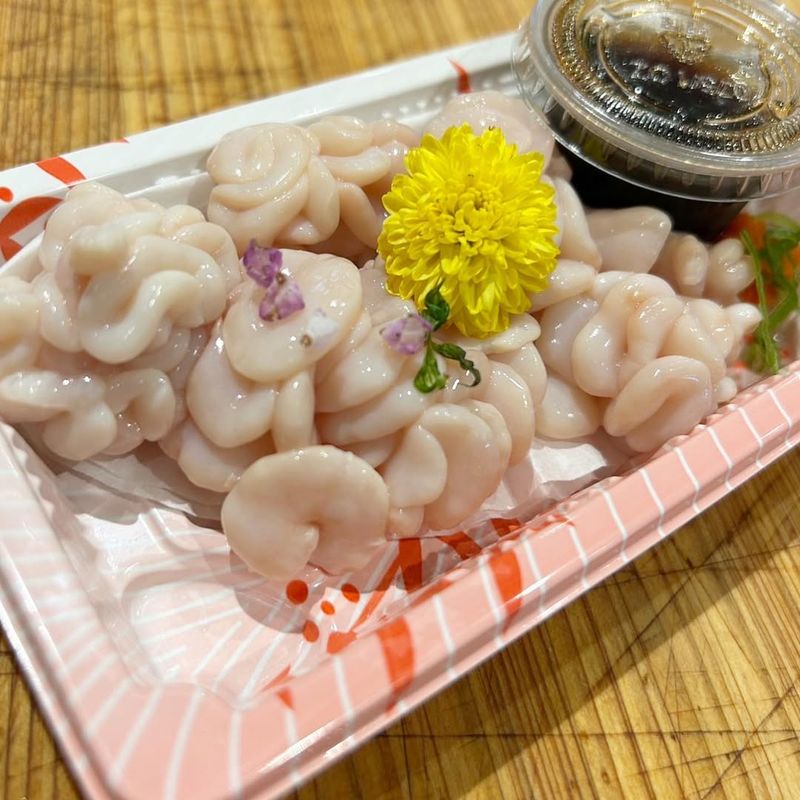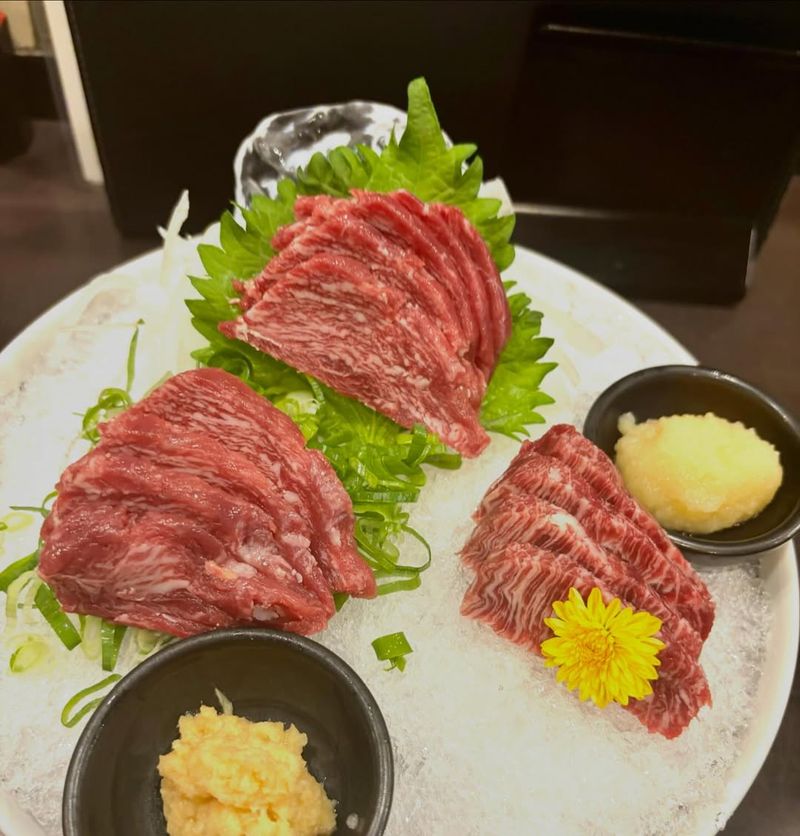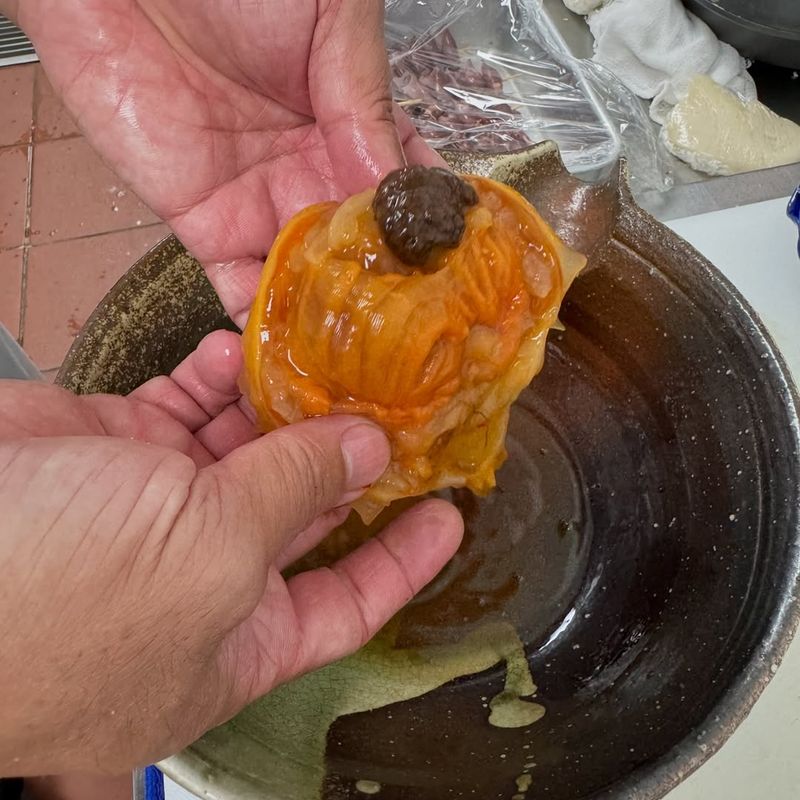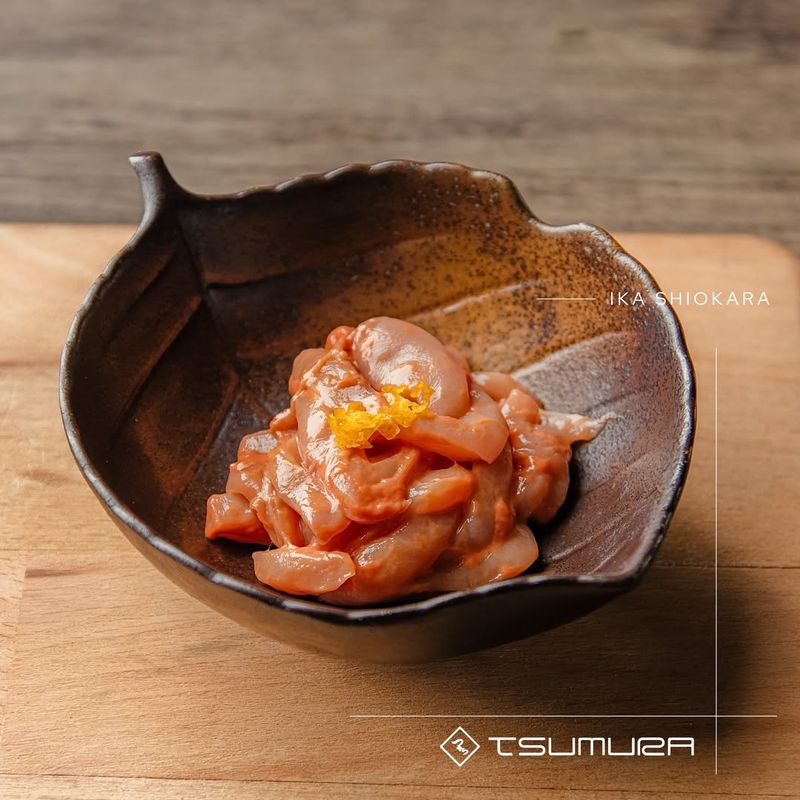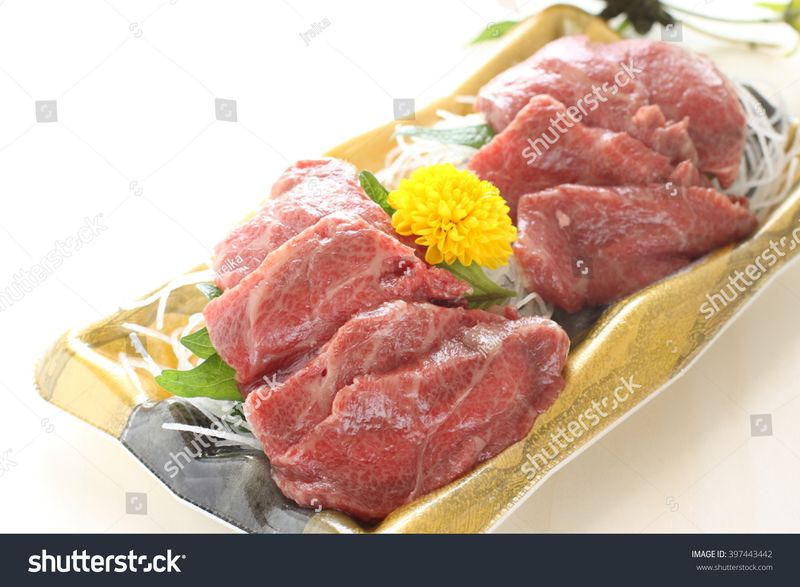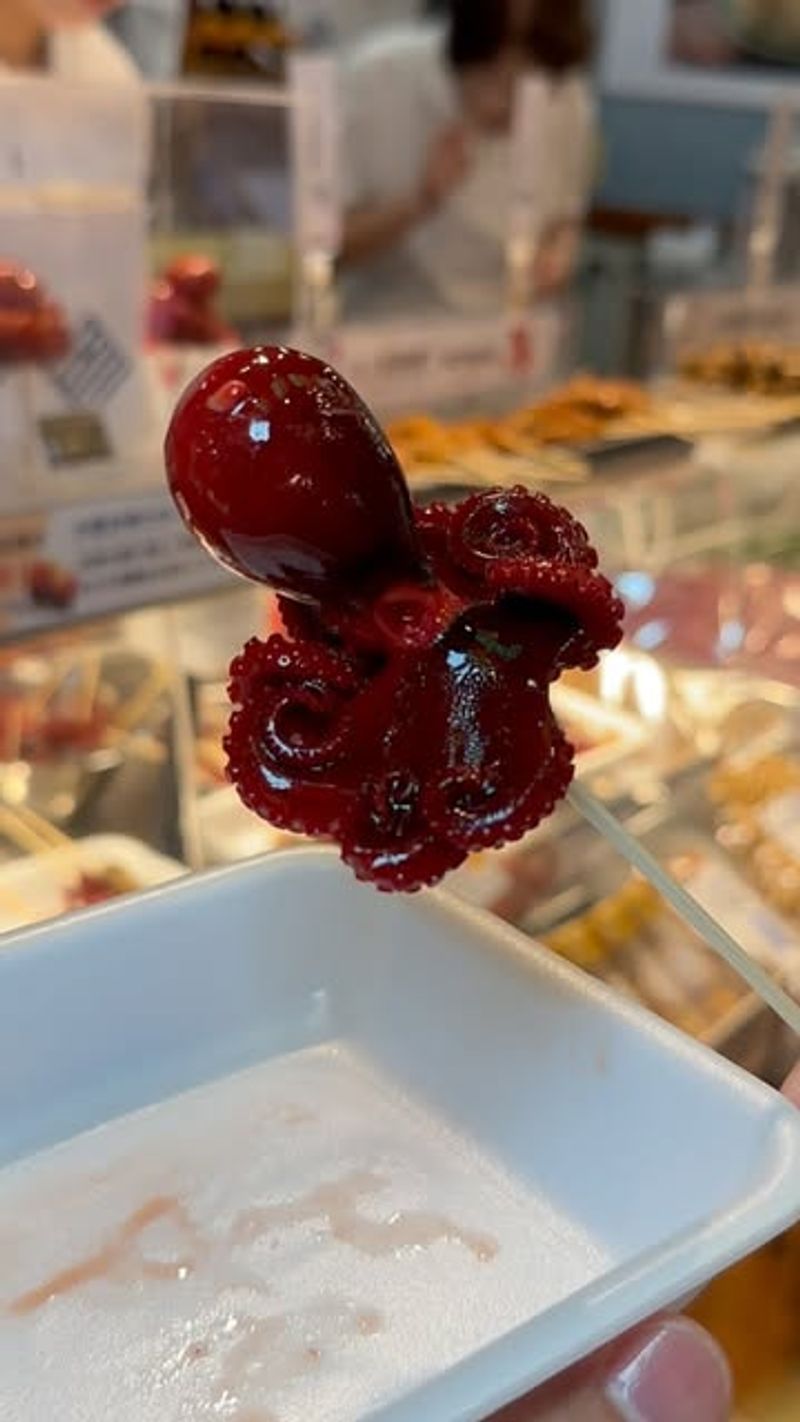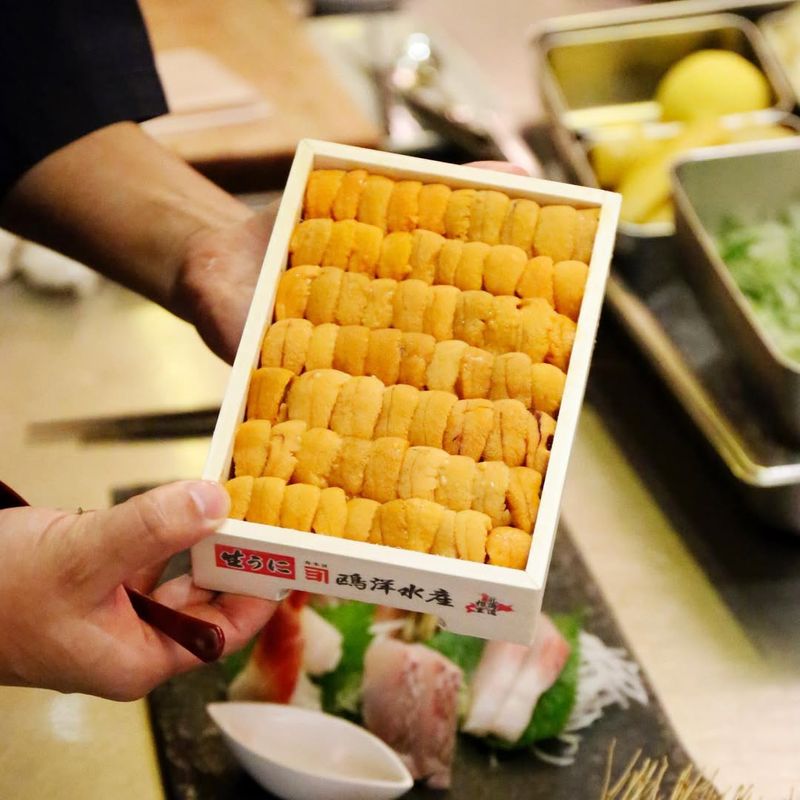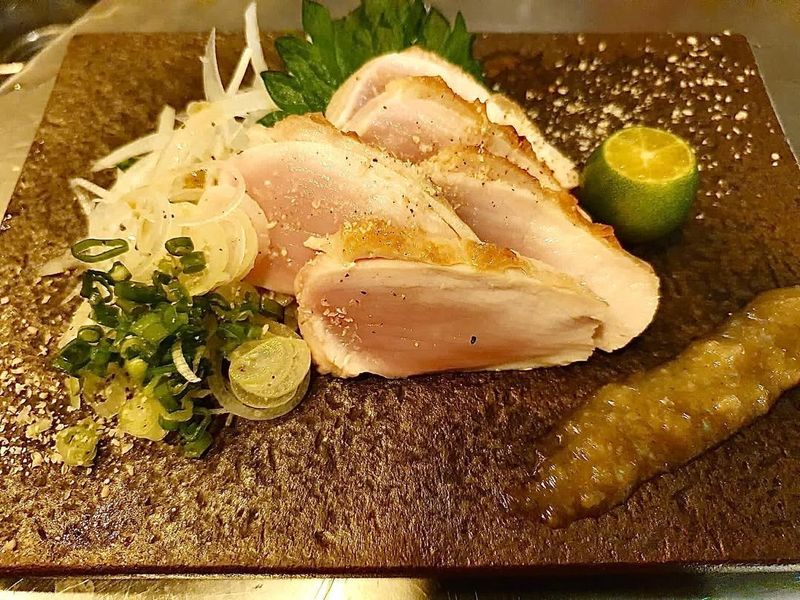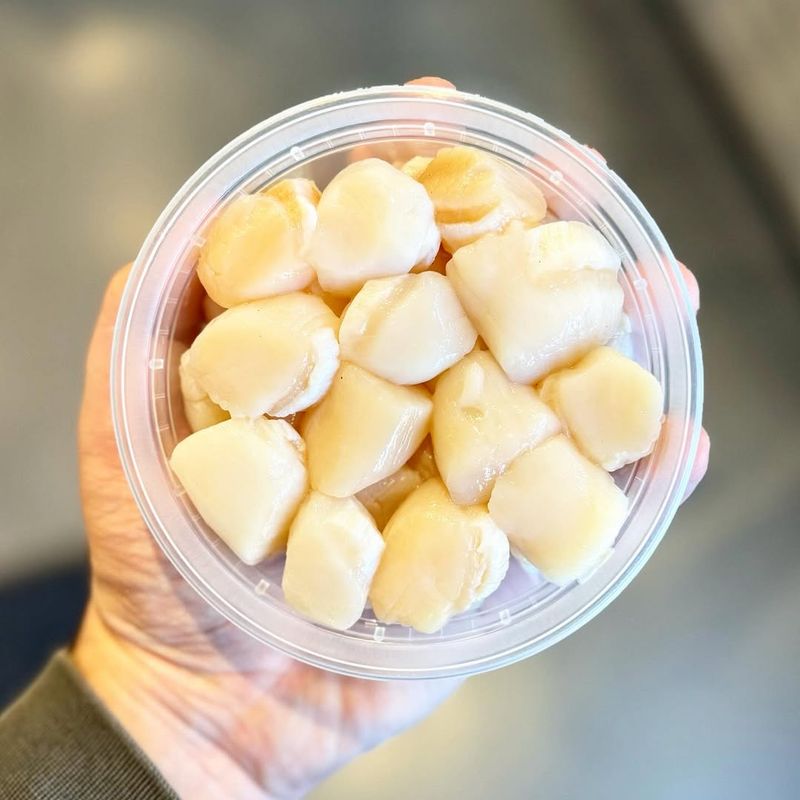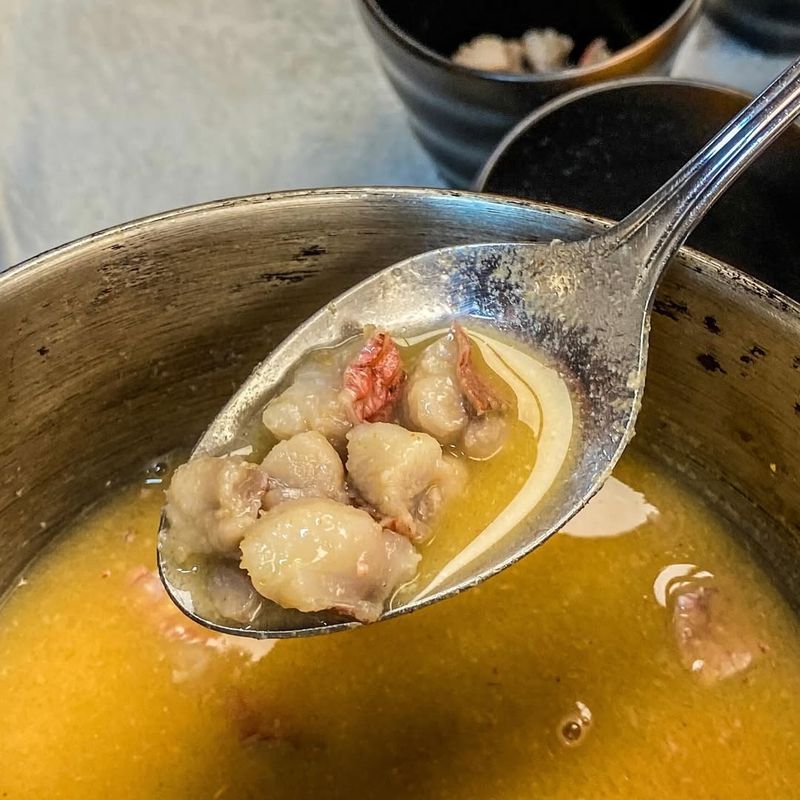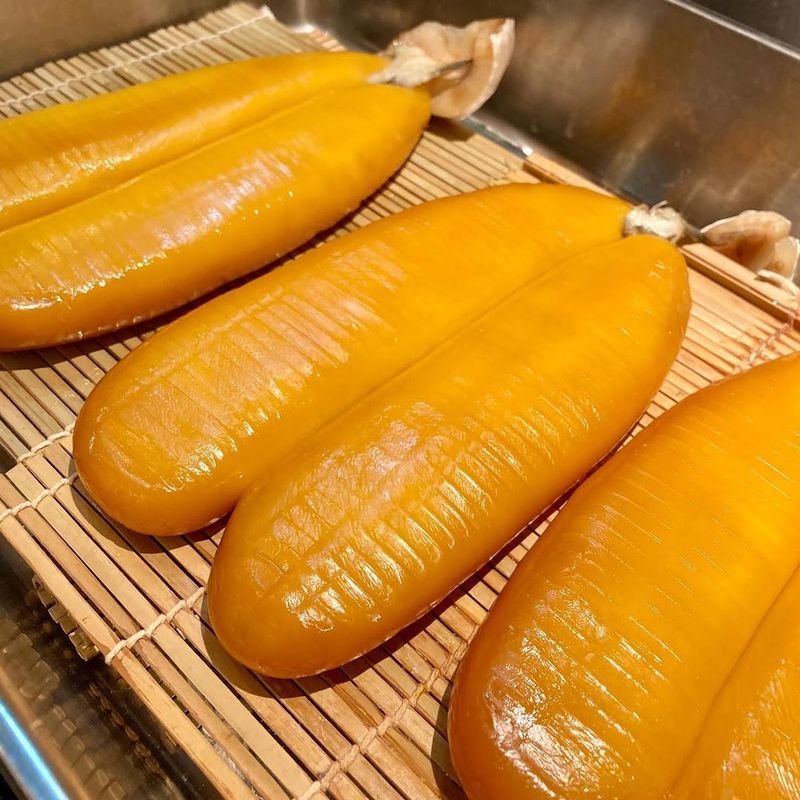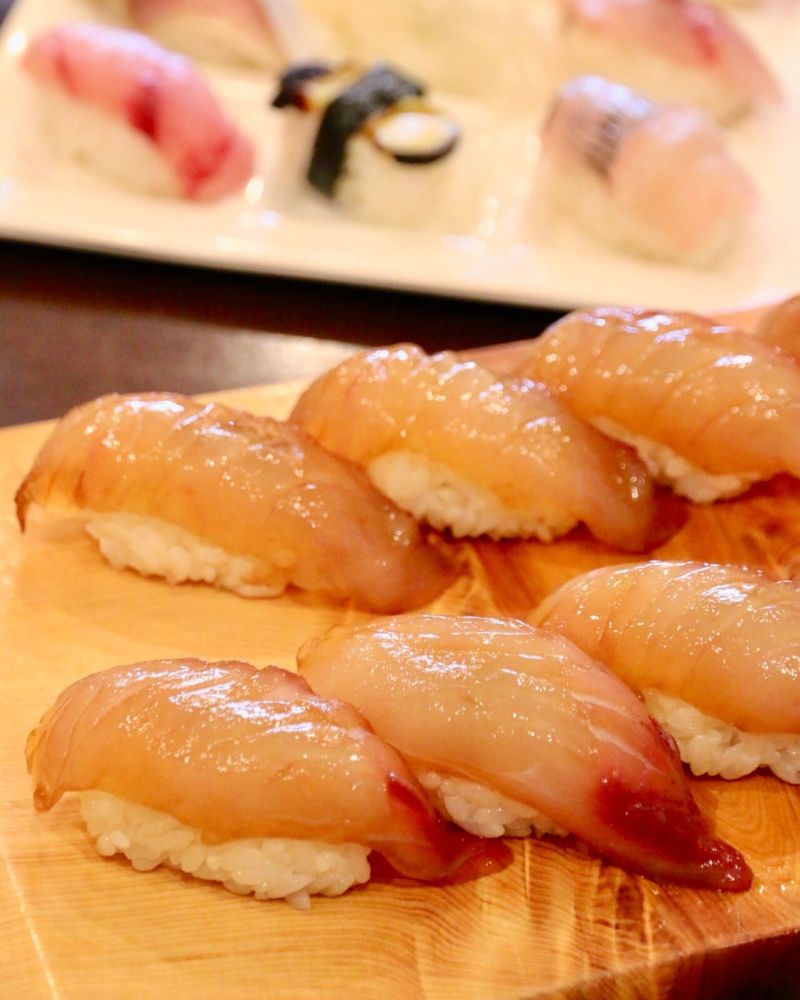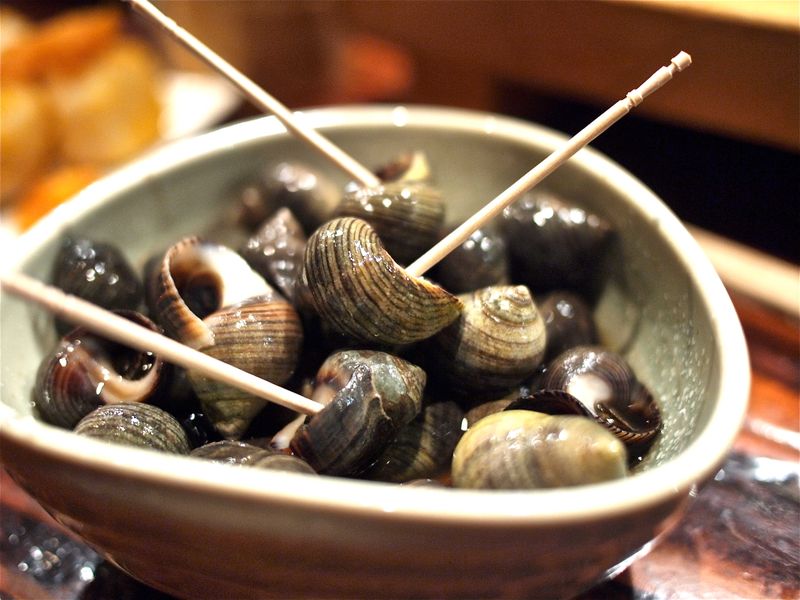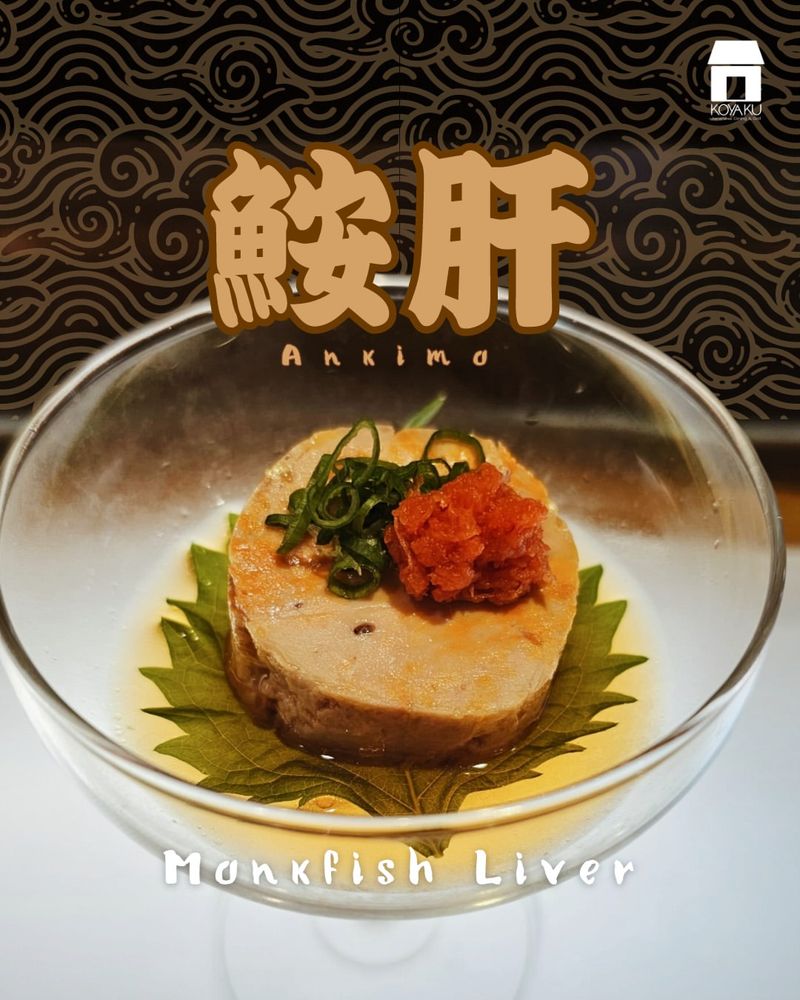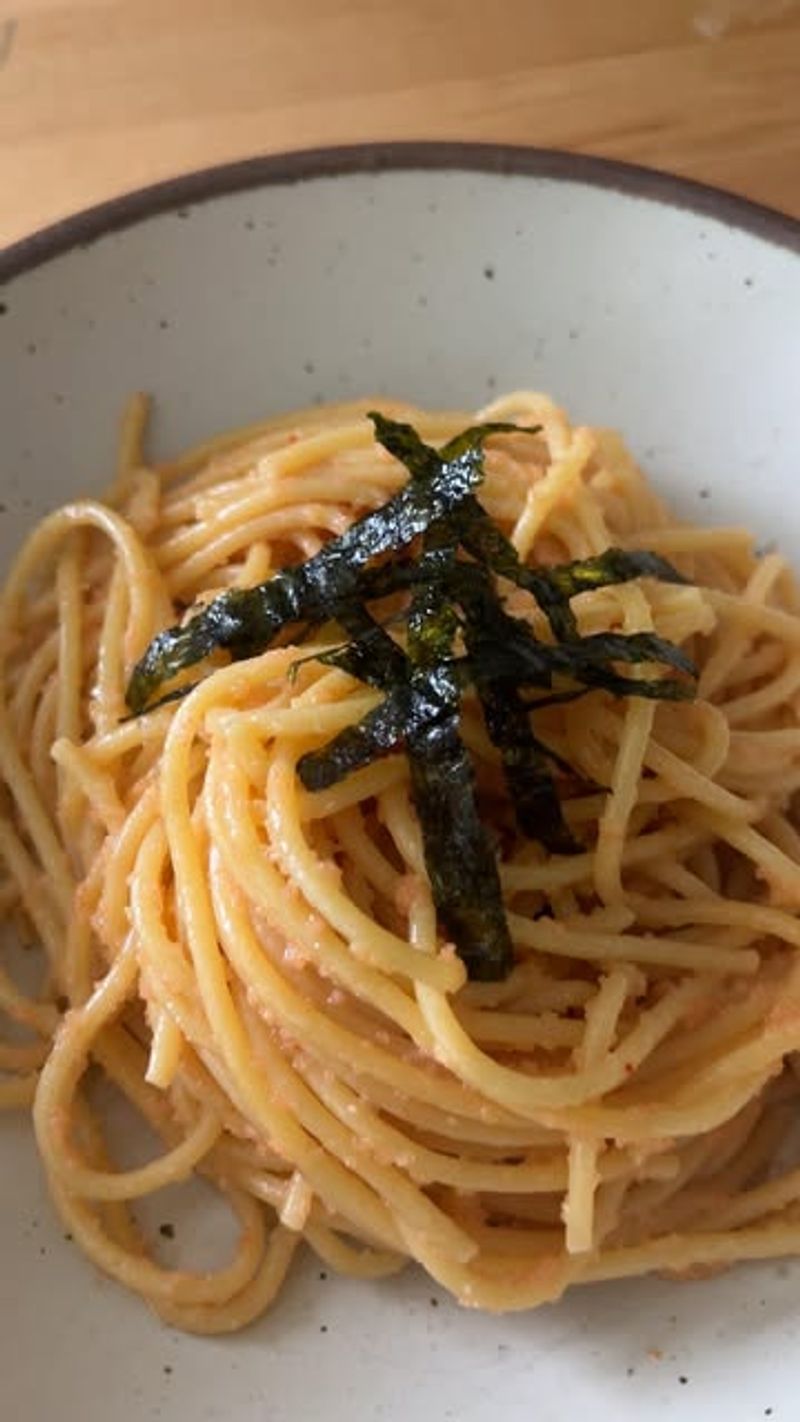Let’s go on a culinary adventure, but tread carefully. Japanese restaurants offer a big array of dishes, yet some delicacies are best approached with caution.
While sashimi and sushi often steal the limelight, there are choices that might not align with every palate. Prepare for an amusing exploration into the surprising world of Japanese cuisine!
1. Fugu (Pufferfish)
Take a deep breath before diving into fugu. Known for its lethal potential, this fish requires the skill of a master chef to prepare safely. One tiny mistake, and you’d experience a dining adventure like no other!
While it’s a thrill for some, others might prefer a less perilous plate. Fugu boasts a delicate texture, but the cost and risk may outweigh the experience. It’s a bucket list item—just ensure life insurance is up to date.
2. Natto
Brace yourself for natto, a sticky, fermented soybean dish that’s as divisive as pineapple on pizza. Its strong smell and gooey texture can be love-it-or-hate-it material. It is packed with probiotics.
Those with adventurous palates might appreciate its acquired taste. The rich, umami flavor pairs well with rice, but it’s not for everyone. Curiosity may lead you here, but be prepared for a sensory surprise.
3. Shirako
Ever pondered trying a dish known as ‘fish milt’? Shirako, often served in winter, is a creamy delicacy from cod. Its soft texture and subtle flavor can be intriguing, yet off-putting to the uninitiated. Those brave enough to try might find it fascinating, but others could be deterred by its origin.
Served in various ways, from raw to fried, shirako offers a culinary challenge. If curiosity beckons, approach with an open mind and a sense of adventure.
4. Basashi (Horse Meat)
Daring diners might consider basashi, or raw horse meat, a unique culinary journey. Popular in certain regions, it’s tender and usually served with ginger and soy sauce. Cultural considerations may cause hesitation.
Those willing to explore will find a surprisingly mild flavor, yet others may shy away due to ethical concerns. If you’re adventurous, basashi offers a taste unlike any other, but it might not be everyone’s cup of tea.
5. Hoya (Sea Pineapple)
Venture into the world of hoya, also known as sea pineapple, with its alien-like appearance and bold flavor. Native to Japan and Korea, this marine delicacy offers a briny, somewhat sweet taste.
Hoya is often served raw and requires a fearless palate. Curious eaters may discover a newfound favorite. It’s a gamble worth considering before diving fork-first.
6. Shiokara
Prepare for shiokara, a dish that challenges even seasoned foodies. Made from fermented seafood, its salty, pungent flavor is an acquired taste. Aficionados appreciate its complexity and depth.
With a texture some find unappealing, shiokara is not for the faint-hearted. Served as a side or a snack alongside drinks, it’s a traditional delicacy.
7. Inago (Insect Dish)
Bugs on the menu? Yes, inago features sautéed grasshoppers, a crunchy snack in some regions. Coated in soy sauce, this dish is high in protein but comes with a side of hesitation.
Adventurous eaters might enjoy its uniqueness, but others may skip. Though praised for sustainability, it might not be the first choice for the cautious diner. For those eager to expand their palate, it’s an unforgettable bite!
8. Kujira (Whale Meat)
Consider the complexities of kujira, or whale meat, before ordering. A traditional but controversial dish, it’s appreciated for its rich taste, akin to beef. Ethical considerations, however, might sway opinions on indulging.
Found in some Japanese eateries, it’s often served sashimi-style. Diners intrigued by its rarity might be tempted, yet others may opt for alternatives. Ethical dilemma may overshadow the experience.
9. Tako Tamago
Tako tamago combines the unexpected—sweet candied baby octopus on a skewer. While visually delightful, it might perplex the taste buds.
Sweet and savory in one bite, it’s a festival street food that thrills and confounds. Some diners revel in its novelty, while others find it an odd mix. If you’re up for a culinary twist, tako tamago offers an intriguing treat.
10. Uni (Sea Urchin)
Dive into the world of uni, or sea urchin, a creamy delight for some and a puzzling dish for others. Its rich, oceanic flavor is beloved in sushi circles but can be overpowering for newcomers. Freshness is key!
For those seeking gastronomic adventure, it’s an indulgence worth trying. However, the unique taste and texture may leave some wishing they’d opted for something more familiar. Approach with an open palate!
11. Tori Sashimi (Raw Chicken)
Boldly raw, tori sashimi takes chicken to an adventurous level. Consumed in select regions, it promises a tender texture akin to fish sashimi. Yet, the risk of consuming raw poultry may outweigh its novelty for many.
Those daring enough find it a unique experience, but others wisely choose cooked options. With careful preparation by skilled chefs, tori sashimi can be safe but requires an adventurous spirit.
12. Kamenote (Gooseneck Barnacles)
For those intrigued by the bizarre, kamenote offers a dining adventure with its claw-like appearance. This seafood choice is unique in both look and texture. Often steamed or boiled, its flavor is oceanic yet subtle.
Some find the visual off-putting, while others delight in its rarity. If you’re ready for a quirky bite, kamenote awaits with a sea-salty surprise.
13. Namako (Sea Cucumber)
Namako, or sea cucumber, offers a texture adventure with its gelatinous consistency. This marine delicacy is often served as sashimi or in stews.
While prized for its health benefits, it can be challenging for those unaccustomed to its slippery texture. The mild flavor appeals to some but may not impress others. It’s a dish best approached with curiosity and a touch of culinary bravery.
14. Karasumi (Dried Mullet Roe)
Karasumi, an acquired taste, brings together the richness of dried mullet roe. Known for its salty profile, it’s often served as a delicacy. Sliced thinly, its bold flavor is complemented by sips of sake.
While some savor its depth, others might find it overwhelming. It requires a palate ready for intense flavors. For those seeking a taste of tradition, karasumi is a fascinating choice.
15. Kusaya
This isn’t just fish; it’s an olfactory experience. Known for its potent aroma, this dried fish is soaked in a unique brine. While its scent might deter some, aficionados appreciate its complex flavor profile.
Often enjoyed with drinks, kusaya challenges the senses. Those intrigued by its storied history might be tempted to taste, yet others steer clear. Approach with caution if you’re sensitive to strong smells.
16. Zazamushi (Aquatic Insect Larvae)
Aquatic insect larvae offers a crunchy exploration into the exotic. Fried or stewed, its nutty flavor might intrigue daring diners. High in protein, it’s a sustainable option! Y
et, its insect origins may cause pause for some. For the curious, zazamushi provides a unique experience, but others might prefer traditional fare. It’s a dish for those who embrace new culinary horizons. Be ready to crunch into an unusual tasty bite!
17. Konowata
Delicacy of fermented sea cucumber innards, challenges the palate with its unique texture. This dish is a traditional treat for those with adventurous taste buds. The pungent flavor and gooey texture aren’t for everyone.
Eaten alongside sake, it offers a deep umami experience. Experienced foodies might appreciate its distinct profile, but it’s a leap for newcomers.
18. Ankimo (Monkfish Liver)
Known as the ‘foie gras of the sea’. It offers a buttery texture and rich flavor. This monkfish liver delicacy is often steamed and served as an appetizer.
While praised by gourmets, its strong oceanic taste isn’t universally loved. Those with a penchant for bold flavors may relish it, but others might find it an acquired taste.
19. Mentaiko (Spicy Pollock Roe)
Mentaiko brings a spicy kick to the table with its seasoned pollock roe. The bold, briny flavor is appealing to spice lovers but can overwhelm others.
A staple in Japanese cuisine, it’s often enjoyed with rice or pasta. While some savor its heat, others might find the intensity overpowering. For those who enjoy fiery flavors, mentaiko is a thrilling choice.


